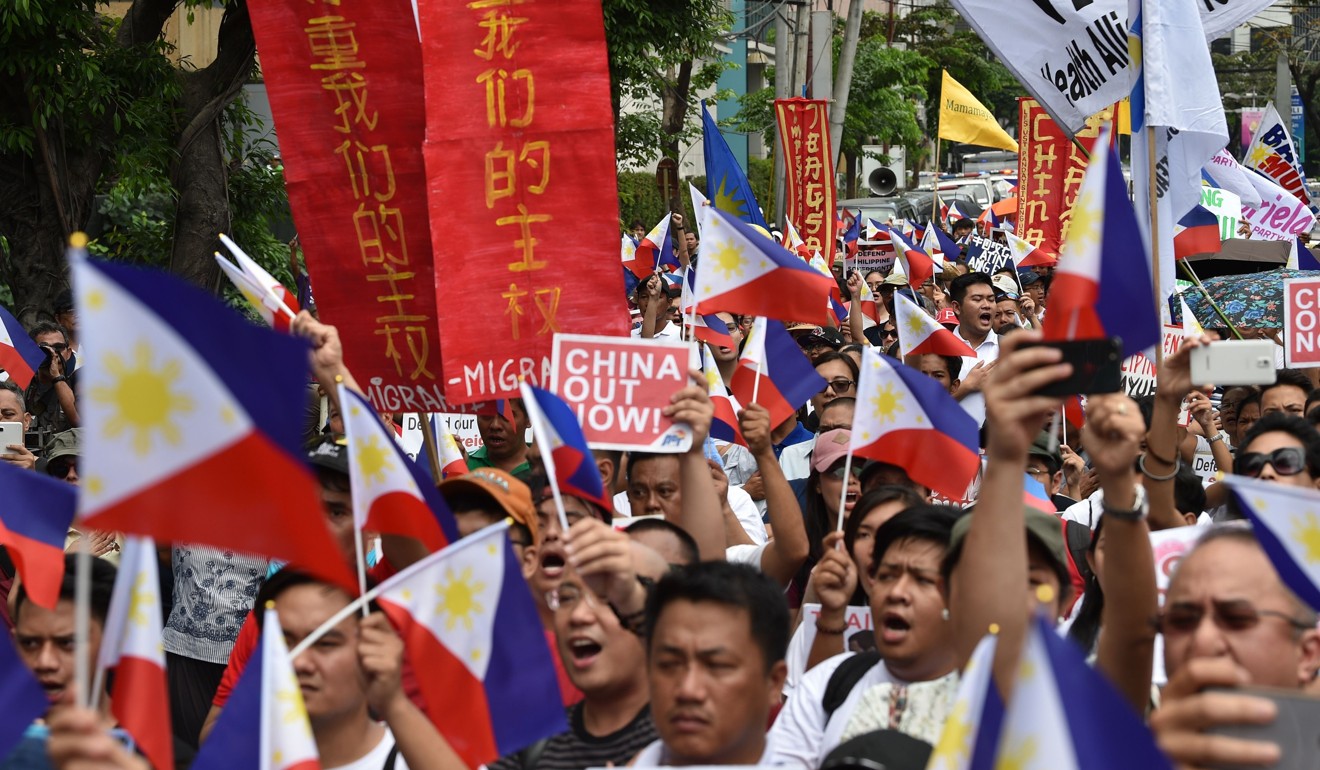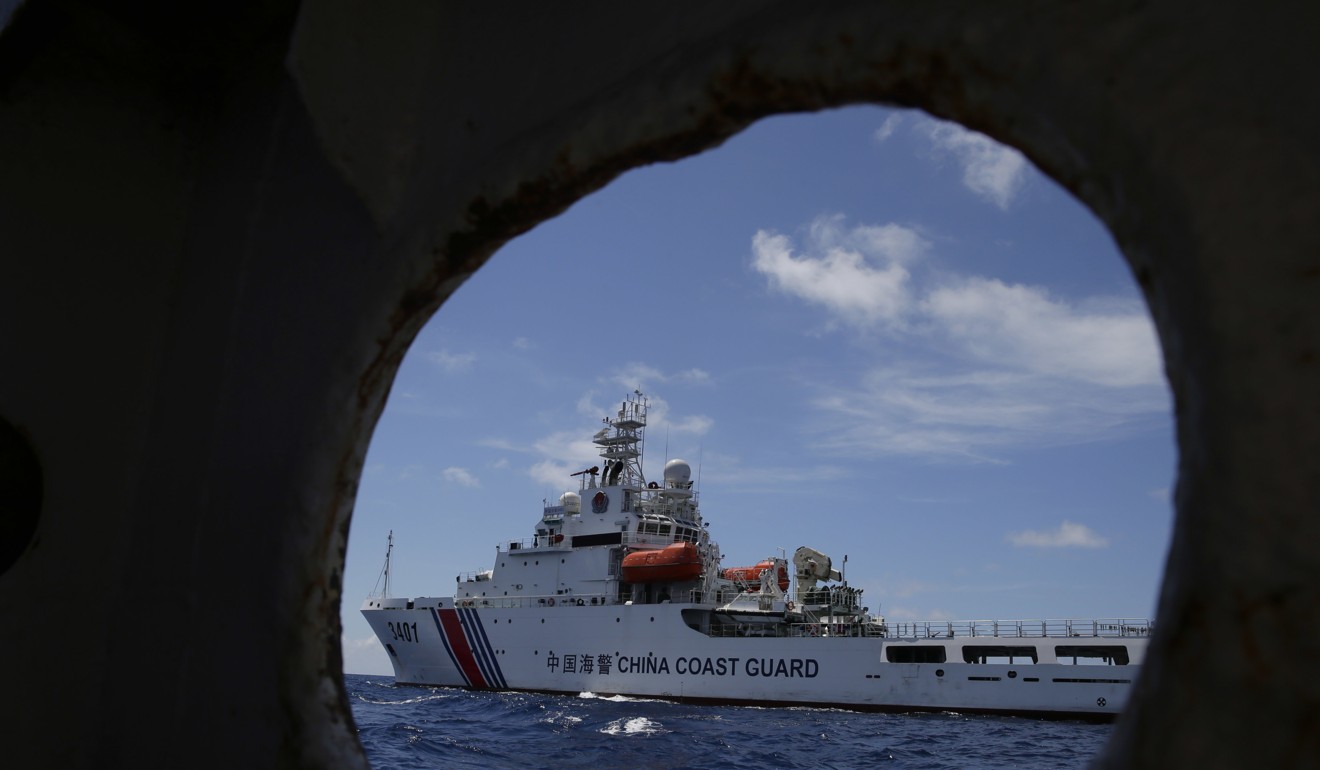
How a swarm of Chinese fishing vessels could swamp Duterte’s effort to strengthen Philippines-China ties
- Richard Heydarian writes that the future of relations ‘hangs in the balance’ as scores of Chinese vessels surround Philippines-occupied Thitu Island, provoking a huge outcry among Filipinos
“If you touch it … I will tell my soldiers [to] ‘prepare for suicide missions’,” Philippine President Rodrigo Duterte warned China amid the countries’ latest brewing dispute over a land feature in the South China Sea. “I will not plead or beg,” the Philippine leader said, “but I am just telling you that lay off the [Thitu Island] because I have soldiers there.”
Since the beginning of the year, up to 275 Chinese fishing vessels have been spotted near the Philippines-occupied Thitu Island, which hosts dozens of Filipino soldiers and civilian residents. The swarm of vessels – sighted 657 times so far this year – has provoked a massive outcry in the Philippines and threatens to disrupt the ongoing rapprochement between the two neighbouring nations.
If not properly managed, the emerging crisis in the Spratly island chain could torpedo warming bilateral relations. After all, a similar situation during the 2012 Scarborough Shoal stand-off poisoned China-Philippines ties for years.
Ahead of the May midterm elections, Duterte has found himself between a rock and a hard place: pressed up against a domestic political backlash as he strives to maintain cordial relations with his new-found strategic patron, Beijing.

The Washington-based Asia Maritime Transparency Initiative was the first organisation to shed light on the reported swarming of the Philippines-held island by Chinese vessels; yet, the issue didn’t gain much traction in the Philippines until recently.
Earlier this month, however, Edgard Arevalo, a spokesman for the Armed Forces of the Philippines, openly confirmed the situation. The Chinese vessels’ likely intention, he claimed, was “to establish their [strategic] presence in the area”.
That comment came just days after a senior military official, Elpidio Factor, had characterised the swarming vessels as “Chinese maritime militia that are occasionally complemented by the Chinese Coast Guard to sustain China’s assertive presence in the vicinity of the sandbars”.
In another sign of the growing trouble, Philippine Foreign Secretary Teodoro Locsin Jnr said on April 2 that he had “fired off a salvo of diplomatic notes against China” and that the Philippine government had threatened to take the issue to the United Nations General Assembly, if necessary.
Two days later, on April 4, the Philippine Department of Foreign Affairs declared the Chinese vessels’ presence in the area “illegal” because they had entered “an integral part of the Philippines”.
In a statement, the department called on the Chinese government to withdraw the vessels. If the swarming was “not repudiated by the Chinese government” then the vessels’ deployment would be “deemed to have been adopted by [Beijing]” as official policy, the statement said.
The exact circumstances of the fermenting mess are still unclear. Chinese officials initially claimed the vessels in the area were mostly harmless fishing boats engaged in legitimate activity.
Independent experts, however, believe they most likely belong to a Chinese paramilitary group, namely the People’s Liberation Army Maritime Militia Forces.

From the Philippines’ standpoint, however, the Chinese militia vessels are carrying out both surveillance and intimidation activities as Manila attempts to repair and upgrade its decrepit facilities on Thitu Island.
The moves also are seen as part of Beijing’s plan to prevent the Philippines from building structures on nearby Sandy Cay, a low-tide elevation within Thitu Island’s territorial sea. China, which claims the sandbar, has vehemently opposed the Philippines’ activity in the area, even deploying warships there in recent years.
The greater worry among Filipinos and other observers is that China eventually will use its armada of paramilitary forces to cut off the supply lines of smaller claimant states in the area.
Through the deployment of such “grey zone” strategies, Beijing, it is feared, would be able to lay siege to rival claimant states and drive them out of the area without firing a single shot.

With its full militarisation of reclaimed islands across the South China Sea, the Asian powerhouse is now in a position to consolidate its claims over disputed land features occupied by Southeast Asian countries such as Vietnam, Malaysia and the Philippines.
The latest survey by the Social Weather Stations, a leading Philippines polling agency, shows that just two out of 10 Filipinos express trust in China. This statistic puts China well at the bottom of the list of preferred regional powers among the Philippine people.
The crisis only exacerbates already widespread negative Philippine views about China. Critics and opposition members of the national legislature have seized on the opportunity to castigate Duterte’s Beijing-friendly policies, calling on Manila to take a tougher stance on the South China Sea.
In fact, two of the administration’s prominent critics – Albert Del Rosario, who had been foreign secretary, and Conchita Carpio-Morales, a former ombudswoman – have gone so far as to file an International Criminal Court case against Chinese officials.
The spectre of a Scarborough Shoal-like crisis is haunting Duterte’s efforts to usher in a golden age of bilateral relations
The former senior officials have accused Beijing of committing crimes against humanity with respect to Filipino fishermen, who have been unable to straddle the heavily militarised areas of the South China Sea.
As del Rosario, the Philippines’ former top diplomat, told this writer in a recent interview: “Duterte will have to revisit his foreign policy” towards China. Carpio-Morales, a former Supreme Court justice, was more blunt: “You are stupid if you don’t assert your rights.”
Duterte, however, seems determined to stay the course and ensure that the stand-off in the Spratlys will not undermine his effort to strengthen bilateral relations with Beijing.
“We go into a compromise for the time being because if we go to war, if there is a violent conflict, we would never win and I would suffer beyond imagination,” the Philippine president claimed, emphasising the necessity for a pragmatic diplomatic approach.
The spectre of a Scarborough Shoal-like crisis, however, is haunting Duterte’s efforts to usher in a golden age of bilateral relations. The future of Philippines-China ties now hangs in the balance.
Richard Heydarian is a Manila-based academic and author

